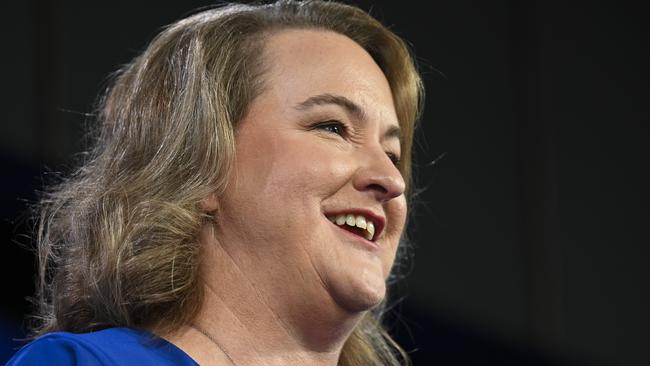Female CEO pay $158,632 less a year than men
Landmark data reveals female chief executives and heads of business are paid, on average, $158,632 less a year than men.

Female chief executives and heads of business are paid, on average, $158,632 less a year than men, the highest gender pay gap of all managers at 27 per cent, a first-of-its-kind analysis has revealed.
New Workplace Gender Equality Agency figures show the national gender pay gap has dropped by 0.6 percentage points to 21.1 per cent, largely due to pay rises in the female-dominated aged-care workforce. Women are earning, on average, $28,425 less each year, or 78 cents for every $1 men earn.
For the first time, the remuneration of highly paid executives – CEOs, heads of business and casual managers – has been included in WGEA reporting and the calculation of the gender pay gap. When CEO salaries are included, the total remuneration gender pay gap is 21.8 per cent.
Female chief executives are paid, on average, $512,970 compared to men on $684,087, a 25 per cent gap equivalent to $171,117.
Female heads of business are paid, on average, $344,962 less than men on $450,314. Women also lag men in other management categories, including key management personnel, where they receive $328,944 compared to men on $417,240.
Female executives and general managers earn $323,106 compared to men in this category on $394,934; female senior managers are, on average, paid $227,385, while men in these roles get $272,260, and female managers receive $145,810 compared to men on $178,942.
Some of Australia’s biggest companies, including Qantas, Virgin Australia, Telstra, Woodside, Macquarie Group and Santos, were revealed in February as having significant gender pay gaps, some above the national median of 19 per cent.
Legislative changes, enacted last year, required employers to report to the WGEA for the first time in 2023-24 their CEO, head of business and casual manager remuneration.
One in four chief executives or heads of business is female, while 25 per cent of boards have no female members, increasing to 41 per cent in male-dominated industries.
According to the WGEA, the higher the manager level, the larger the difference between total remuneration and base salary gender pay gaps, with the largest difference at CEO/HOB, highlighting the role of bonuses and discretionary pay in gender pay gaps at the most senior levels.
Female CEOs are paid a base salary that is on average $74,923 less per year than their male counterparts, but the gap more than doubles when comparing total remuneration, including bonuses and discretionary pay.
While there are more female CEOs/HOBs in women-dominated industries (44 per cent) than in male-dominated (9 per cent) or gender-balanced (18 per cent) industries, this is still substantially less than their overall representation of 73 per cent in those industries.
The main driver of the decrease in the gender pay gap was the 15 per cent pay rise in the aged-care sector, where women make up about 80 per cent of employees. A secondary driver was a greater increase in female managers’ average remuneration compared to male managers, up 5.9 per cent and 4.4 per cent respectively.
The gender pay gap increases as workers get older, peaking at 32.6 per cent for workers aged 55 to 59.
More employers are taking action to improve workplace gender equality, with 68 per cent conducting a gender pay gap analysis, up from 55 per cent.
WGEA chief executive Mary Wooldridge said there was an observable shift in employer focus and attention in the past 12 months, noting the latest results reflect the landscape in Australian workplaces as employers anticipated their gender pay gaps being published for the first time in February.
“Employers are being held to account on their gender equality performance by employees, prospective employees, investors and the community. Business leaders are being challenged to articulate the drivers of their gap and how they will address it,” Ms Wooldridge said.
“Encouragingly, our results suggest the anticipated publication of employer gender pay gaps had a motivational effect.
“WGEA’s results show change is happening, with a significant increase in employers investigating what’s driving their gender pay gap and acting on the results.
“But the national results show a persistent and pervasive gender pay gap still limits the lifetime earnings of Australian women, affecting their ability to save, invest and build long-term financial security for themselves and their families.”
The federal government will introduce legislation into parliament this week that would require organisations with 500 or more employees to commit to genuine and measurable targets to progress gender equality in their workplaces.








To join the conversation, please log in. Don't have an account? Register
Join the conversation, you are commenting as Logout